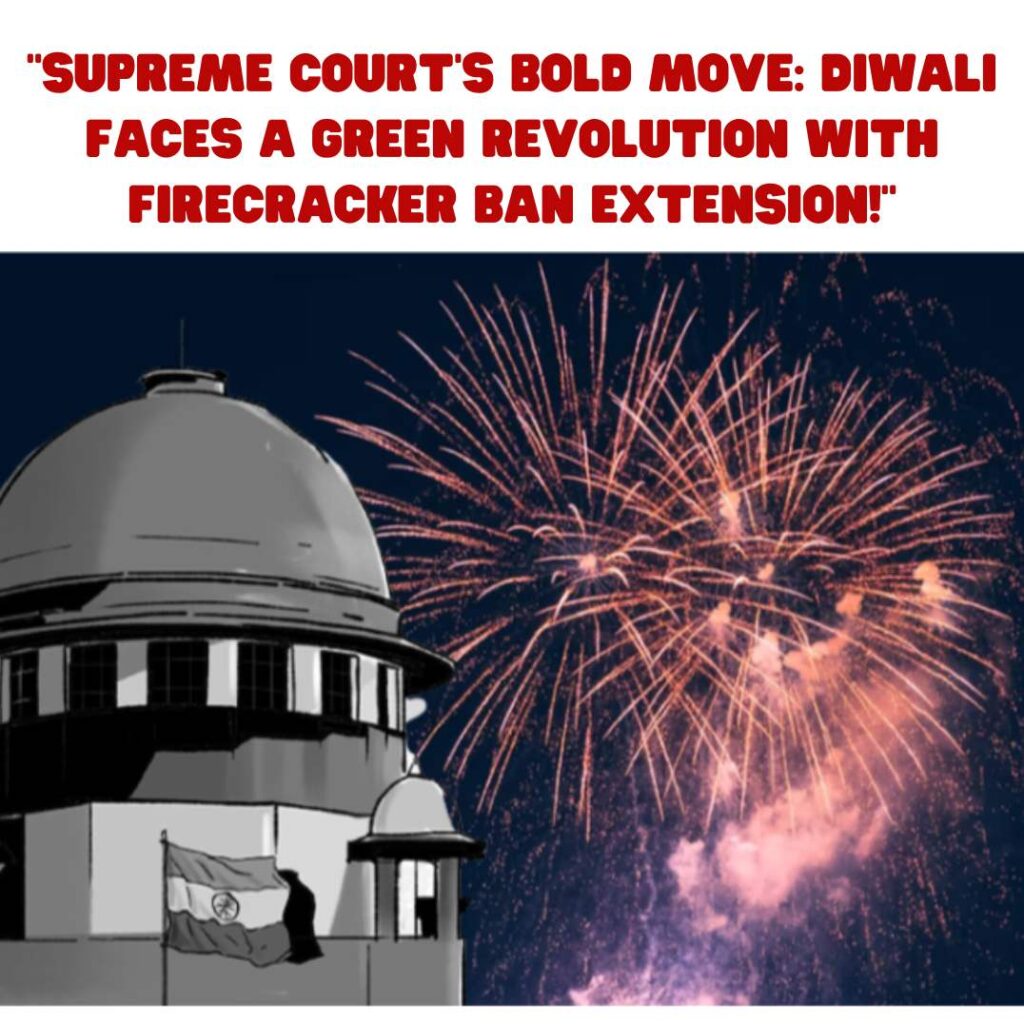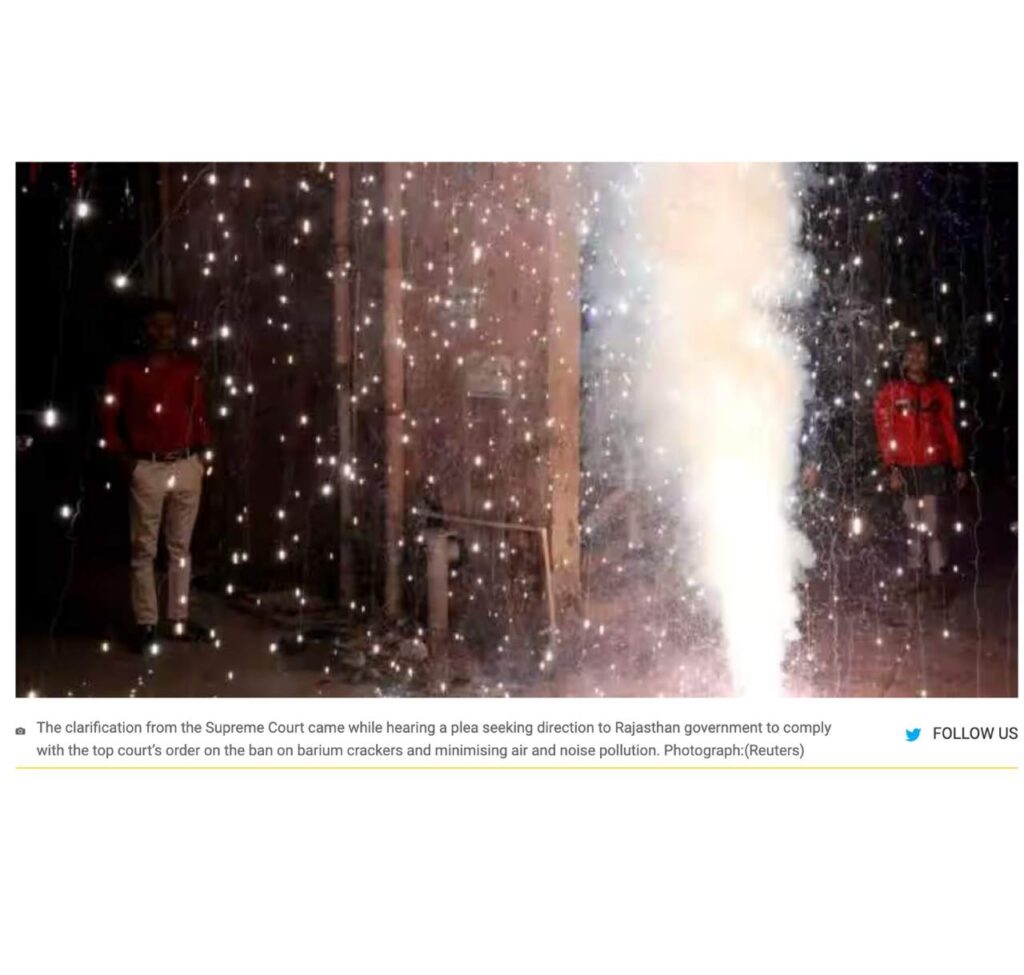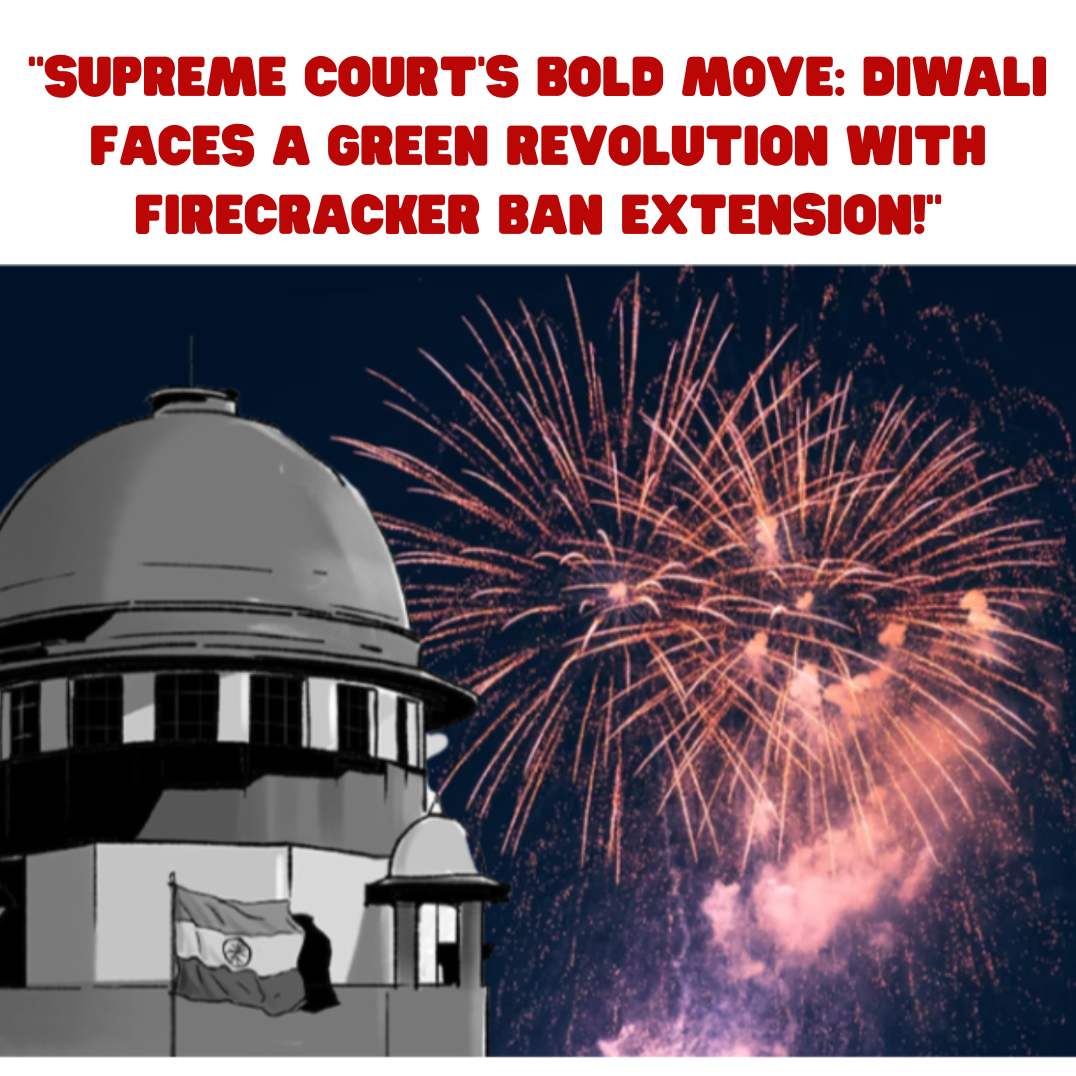As India eagerly awaits the festive season, the Supreme Court has taken a decisive step to fortify its commitment to environmental protection. In a monumental move, the Court has extended its earlier directive, imposing a ban on the use of barium and prohibited chemicals in firecrackers. What makes this decision even more impactful is that it transcends the boundaries of Delhi and its surrounding regions, applying to every corner of the country. With Diwali’s luminous celebration just around the corner, this ruling is poised to have a significant impact on the upcoming festivities.
A Unified Front for Environmental Safeguarding
In a recent court hearing, a plea surfaced, urging the government of Rajasthan to abide by the Supreme Court’s ruling regarding the ban on barium-laden firecrackers and the imperative reduction of air and noise pollution. The Court, during this hearing, emphasized that there is no need for additional directives. The reason lies in the fact that the Supreme Court has previously issued a series of orders delineating specific steps aimed at mitigating and preventing air and noise pollution. These existing orders hold sway over every state within India, including the culturally rich state of Rajasthan.
Balancing Celebration with Environmental Preservation
Justice Sundresh, a stalwart advocate for the environment, underlined the significance of celebrating with a profound sense of moderation. He expressed the view that celebrations are indeed vital for fostering happiness and joy. However, these jubilant moments should not come at the cost of environmental degradation. In essence, he champions the idea that celebrations should harmonize with nature.
Justice Bopanna further delved into the issue, highlighting a rather pertinent point. He pointed out that it is often adults, and not children, who engage in an extravagant display of bursting firecrackers. These adults, in their exuberance, tend to disregard the repercussions of their actions on pollution and general inconvenience. Justice Bopanna also acknowledged the changing dynamics among school-going children, who have become increasingly aware of the environmental implications of excessive firecracker use.
Time-bound Celebrations and State Responsibilities

Justice Bopanna, in his insightful commentary, observed that people frequently circumvent the time restrictions imposed on the bursting of firecrackers. He offered the example of a 10:30 pm time limit, highlighting that people often exhaust their entire stash of firecrackers well before the stipulated hour.
Beyond reinforcing the time-bound limitations on celebrations, the Supreme Court used this platform to remind state governments of their substantial role in minimizing air and noise pollution. This responsibility extends not only during the festive season but also throughout the year. The Court’s directive regarding firecrackers is not confined to Delhi or specific regions; it resonates as a collective pledge to safeguard the environment across all states in the nation.
An Insight into Air Pollution Mitigation
Shifting the focus to a broader perspective, the Supreme Court convened to address the escalating air pollution crisis in the Delhi-NCR region. The Court issued authoritative directives to the states of Punjab, Uttar Pradesh, Rajasthan, Haryana, and Delhi, urging them to halt the burning of crop residue (stubble burning). This phenomenon has emerged as a major contributor to the soaring levels of air pollution in the region. Simultaneously, the Court mandated the Chairperson of the Delhi Pollution Control Board to investigate the non-operation of smog towers in the national capital.
As the luminous festival of Diwali approaches, these legal interventions stand as vigilant guardians of the environment, ensuring that celebrations are marked by an eco-conscious approach. The Supreme Court’s resolute directives serve as a testament to the nation’s commitment to environmental preservation and sustainable festivities, setting a pioneering example for years to come. This Diwali, it’s not just the diyas (lamps) that will light up homes; it’s also the collective consciousness of a greener, healthier India.
More articles, CLICK HERE



















What do you think?
It is nice to know your opinion. Leave a comment.